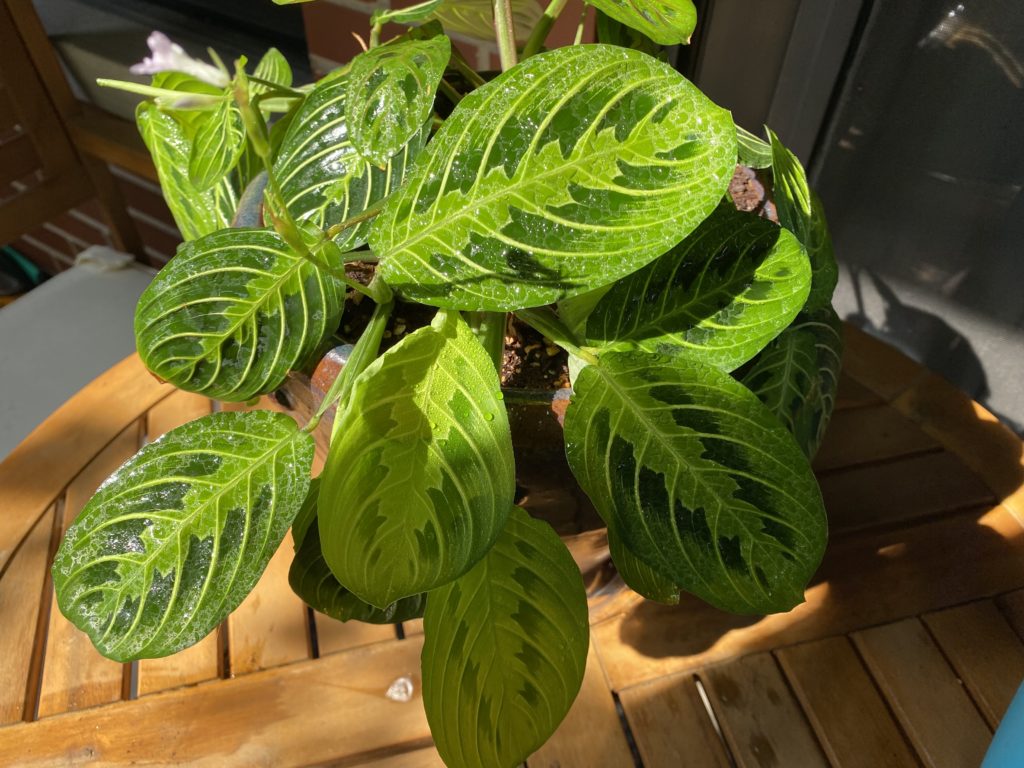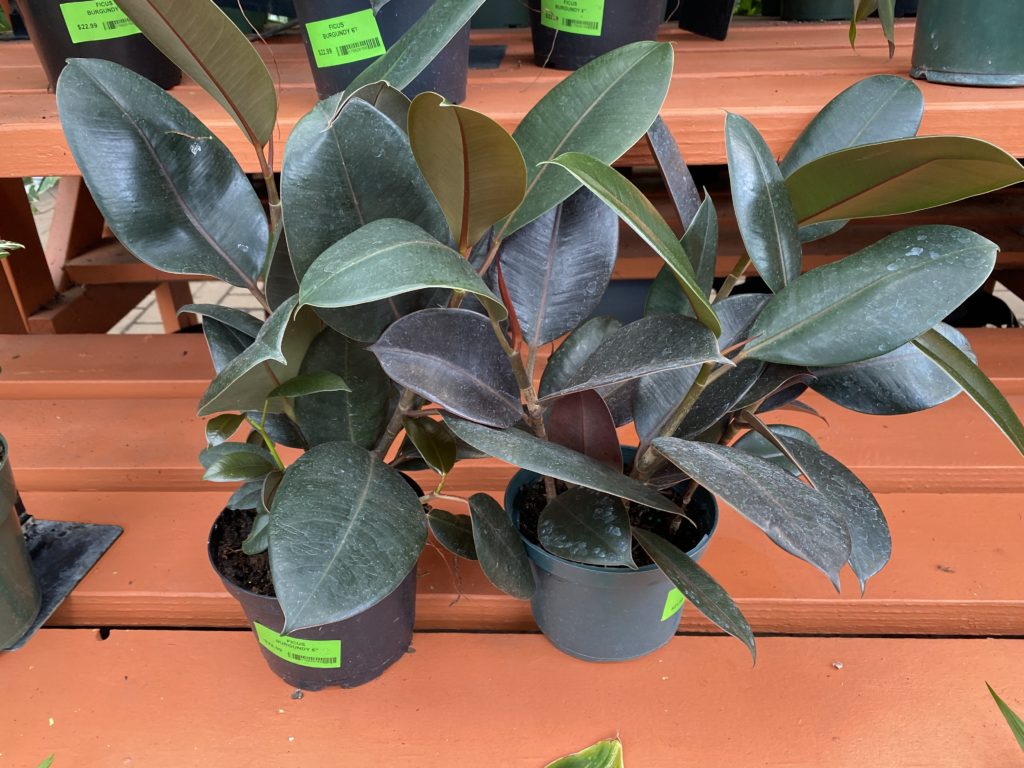Do you love houseplants but worry about keeping them alive? Or do you have a horror story about finding the perfect plant only to have it die a few months later? Good news: you aren’t alone! This guide features only affordable plants that are hard to kill.
As many people learn the hard way, not all plants are simple to care for – especially with busy schedules, travel, or simply not knowing what a specific plant needs to be healthy and happy. Instead, many new plant parents end up killing their plant and may become discouraged at bringing future plants home. If this sounds familiar, this is the list for you.
This resilient plant guide is designed for those looking for stress-free and low-maintenance plants that are hard (or even impossible) to kill. This list contains great starter plants to introduce you to basic plant care with species that can take a little bit of neglect and still end up fine. And because everyone has different plant preferences, they span a variety of plant types – from lush tropical foliage to desert cacti, and everything in between. We also worked to make sure that plants on this list will be easy to find at your local nursery or big box store, and have affordable price points to meet any budget.
Take a look at our list and see if there are any hard to kill plants that jump out as fitting in perfectly to your space to give indoor houseplants a try without the worry.
Contents
Sansevieria
🌱 Nicknames: Snake Plant, Mother in Law’s Tongue
💡 Light: Low light to full sun
💦 Water: Only when soil is completely dry (monthly)

Sansevieria – better known as Snake Plants – are the most popular houseplants that plants that are also hard to kill. They can tolerate anything from low light through direct sun, and only need water when their soil is completely dried out – watering once a month will keep a plant more than happy. In fact, the only real way to kill these plants is by giving them too much water. Snake plants are also slow growing by nature, so they are great for someone with a set space not looking for a plant to quickly take over or need frequent repotting.
Snake plants have several variations depending on your preferences for coloration and overall structure, but all Sansevieria plants will showcase long, flat and hardy leaves that give the plant a very striking vertical presence. This makes Sansevieria a great plant addition for darker corners – many snake plant enthusiasts enjoy them grouped in large pots or raised planters where other decor simply wouldn’t work. In fact, they’re one of our top picks for plants that can thrive in low light.
Finally, Sansevieria is a really easy plant to propagate. It’s simple to separate large mature plants into smaller pups, or to take cut leaf cuttings and make new baby snake plants. If a tall and affordable, virtually no maintenance plant is what you’re looking for, a Sansevieria variant could be the perfect addition to your home.
ZZ Plant (Zamioculcas zamiifolia)
🌱 Nickname: ZZ Plant
💡 Light: Low light to bright indirect light
💦 Water: Only when soil is completely dry (monthly)

Most people are surprised that the beautiful Zamioculcas zamiifolia – better known as the ZZ plant – is also one of the easiest plants to care for. ZZ plants adopt to virtually any indoor space and do well when mostly left alone. Their striking looks of long waxy stems with beautiful glossy leaves add a sense of sophistication to any space – the fact that they are pretty much maintenance-free just makes them even more great for indoor plant enthusiasts. They can take low to bright lighting conditions and our great with monthly waterings, making them very low maintenance. Like Sansevieria, overwatering is one of the biggest issues, resulting in wilting yellow leaves. If this happens, just let your plant dry out completely and it should easily bounce back.
Propagation is also possible with ZZ plants. Their root structure – or rhizome – can be separated to form smaller plants, or you can clip individual stems to make water clippings that will eventually grow into their own plants. Their easy-going nature and beauty helped ZZ Plants earn a top pick on our list of the best dark green plants you can buy today. Whether you’re looking for a beautiful leafy plant to get started with, or an easy plant to experiment with propagation, the ZZ plant could be a great starter plant for you!
Yucca Plant (Yucca elephantipes)
🌱 Nicknames: Yucca
💡 Light: Medium light to full sun
💦 Water: Only when soil is completely dry (bi-weekly)

Yucca plants are beautiful desert plants that are purchased as mature plants with 1-3 stems that have various shoots of shear-like leaves that make striking foliage. They are incredibly drought tolerant and will thrive from medium indoor light all the way up to direct summer sunlight.
Yucca plants are seen by many as impossible to kill – while watering 1-2 times a month is ideal, these plants can do perfectly fine if you forget a few waterings. Like others on this list, they run the risk of issue with over-watering, so it’s better to keep the Yucca on the dryer side.
Like others on this list, Yucca plants are also simple to cultivate. Stems or growth pups placed in the soil – even of the parent plant – will start to form roots and eventually grow into another yucca plant. If your Yucca is grown in perfect conditions, it may also flower, later releasing seed pods to cultivate young plants from scratch.
Prayer Plant (Maranta leuconeura)
🌱 Nicknames: Maranta, Prayer Plant, Calathea
💡 Light: Medium light to bright indirect light
💦 Water: Regular waterings to avoid soil from drying out (weekly)

Prayer plants are a lush, tropical and easy-to-care-for plant that can thrive in virtually all indoor environments. They’re happiest with medium to full direct lighting for at least 6 hours a day, or can be kept outdoors during the summer provided they are protected from direct sun exposure. Their water needs can be a little more finicky than other entries on this list, but very easy to manage. Just be sure you do not allow the soil to become bone dry between waterings, or letting the soil to stay soggy which may attract pets like spider mites. A well draining pot and regular watering schedule will be easy to formulate with the beautiful maranta plant.
Maranta plants come in several variations. The “lemon lime” or “red” are among the most popular, while even more variants in the Calathea family exist to further grow your collection. Their large bold leaves have bold patterns and an iridescent sheen that grow in a compact, vine-like pattern. They add a strong statement when kept alone or paired with other tropicals.
Prayer plants can also be easily water propagated by taking a stem segment and allowing 1”-2” roots to form in a shallow jar of water before adding it to a pot to grow into its own plant. If you’re looking for adding some tropical flair to your place with a plant that has very basic needs, a prayer plant across any of the maranta or calathea variants might be the prefect fit for you.
Rubber Tree Plant (Ficus elastica)
🌱 Nicknames: Rubber Tree
💡 Light: Medium light to bright indirect light
💦 Water: Regular waterings to avoid soil from drying out (weekly)

The ficus family has been incredibly popular for years. But if you’re not ready to take on a high-maintenance plant like the Fiddle Leaf Fig, its cousin, the Rubber Tree might be a great alternative if you’re after tropical plants that are hard to kill. Rubber trees are hardy and beautiful and sport large waxy dark green leaves that increase with size as the plant matures. They can take a variety of lighting conditions and will do great with regular waterings – although they won’t be upset if they dry out for a few days if you happen to forget your watering day.
The great thing about Rubber Trees is that you can find them in a variety of sizes to match the needs of your space. From small plants that can be kept on a shelf or sill to more mature plants that can be purchased as 3’ – 5’ plants, there’s a rubber tree out there to perfectly fit within your space and budget. These plants may be a bit tricker to propagate than others on this list, but it’s definitely possible. I’ve found that water propagation with the ficus family works the best, and have grown a family from a single plant before.
If your’e after a tropical tree with rich and lush foliage that’s easier to care for than other plants in this category, a Rubber Tree may be a great introduction to more advanced, large-scale tropical plants.
Spider Plant (Chlorophytum comosum)
🌱 Nicknames: Spider Plant or Hawaiian Spider Plant (variant), Reverse Spider Plant, Spider Ivy, St. Bernard’s Lily, Ribbon Plant, Airplane Plant
💡 Light: Medium light to bright indirect light
💦 Water: Regular waterings to avoid soil from drying out (weekly)

Don’t let the name “Spider Plant” give you creepy crawly vibes – this beautiful tropical houseplant couldn’t be anything from its name. It’s long and narrow leaves with milky white and green feel at home in hanging baskets or vining out of containers. They will thrive in medium to bright light, and will do best with regular waterings, although they are among the more forgiving of tropicals if you miss a watering or two.
Spider plants are also very easy to propagate. Plants will send out vines with small white flowers which will then grow into smaller versions of the mother plant. Once large enough, these baby plants can be placed in water or directly into the soil to quickly turn into their own plants. It’s actually very common for families to have Spider Plants that last decades, with friends and family getting baby offshoots from the “heirloom” plant.
One of the other benefits of Spider Plants is their incredible ability to purify indoor air, helping you breathe easier in addition to being an all-around great plant. If you’re interested in growing a gorgeous hanging plant that is hardy and visually appealing, a Spider Plant may be the perfect tropical starter plant for you.
See a full list of our Spider Plant care guides >
Parlor Palm (Chamaedorea elegans)
🌱 Nicknames: Parlor Palm
💡 Light: Bright indirect light
💦 Water: Regular waterings to avoid soil from drying out (weekly)

The Parlor Palm has been long revered as an iconic houseplant dating back to the Victorian Era, and their popularity is just as strong today as it was back then. These beautiful plants that are hard to kill can survive in lower light conditions, but will absolutely thrive in areas that have bright indirect light to help it grow faster. For watering, palms are very thirsty plants! Allow your soil to mostly dry out between waterings, but don’t let it get bone dry. Depending on the humidity and temperature, watering once (or a few times) a week to keep the soil somewhat moist (but not water logged) will keep your Parlor Palm happy.
The dark green leaves add a regal and tropical flair to any interior. Smaller plants can be kept on desks or windowsills, while larger plants can graduate to large floor pots, serving as statement pieces for any room. If you’re looking for a hardy plant that you can take through the long haul, a Parlor Palm may make a great companion!
Money Tree (Pachira aquatica)
🌱 Nicknames: Money Tree, Saba Nut, Malabar Chestnut, Wild Kapok
💡 Light: Low to bright indirect light
💦 Water: Regular waterings to avoid soil from drying out (weekly)

If you’re looking for a beautiful (and miniature) tree that’s also rumored to bring good luck and financial fortune, the Money Tree might be a great plant to consider. Beyond the potential good vibes this plant may bring, it’s also incredibly adaptive to a variety of indoor conditions. The plant will do best in bright indirect light, but can also tolerate lower light conditions – although it will grow a lot slower. Since Money Trees can store water in their trunks, it’s best to let the top level of soil completely dry out before watering. Like other plants on this list, Money Trees will not like having their roots submerged in water, so having well-draining soil, and a container with proper drainage holes will keep your Money Tree (and prosperity vibes) going strong.
These plants make wonderful desk plants. Some are available to purchase with intricately braided trunks. Others will have one massive trunk with small leafy segments that look more like a Bonsai tree. Whichever design you select, the adaptive nature and beauty of this plant will make it a simple to care for focal point of your new plant collection!
Dracaena Janet Craig (Dracaena compacta)
🌱 Nicknames: Dracaena, Janet Craig Dracaena
💡 Light: Low to bright indirect light
💦 Water: Regular waterings to avoid soil from drying out (weekly)
If you want a loud and proud plant with lots of color, the Janet Craig Dracaena may be the best new plant for you. These tropical plants will thrive in many indoor conditions and will tolerate anything from low light to bring indirect light. Even though they’re tropical, Dracaena plants don’t need much water, and will be forgiving if you forget a watering or two.
The Dracaena Janet Craig is one of a variety of plants in the Dracaena family. Dracaena Twister, Dracaena Bicolor, Green Jewel, or Warneckii Surprise all have similar growth requirements with different leaf patterns, shapes and textures, ensuring there’s a Dracaena out there for everyone. Take a look at our guides linked above to see if a Dracaena would be great for your home.
Aloe Vera (True Aloe)
🌱 Nicknames: Aloe, Aloe Vera, First Aid Plant
💡 Light: Bright indirect light
💦 Water: Only when soil is completely dry (bi-weekly)

Aloe Vera is a gorgeous succulent with spiky, fleshy leaves and is equally known for it’s ability to help moisturize and heal simple wounds and burns. Beyond its beauty and medicinal uses, the Aloe is also a very easy to grow plant, making it very popular with both new and seasoned houseplant fans. Aloe Vera plants love light. Keeping them near a sunny window with 6-9 hours of indirect bright light will keep them happy and healthy. And as succulents, they also prefer to be kept on the dry side. Simply allow the soil to dry out completely between waterings – every other week depending on container size, although your plant will not get upset if you miss a few days from the your watering schedule.
Aloe plants can be found in a variety of nurseries and garden centers, ranging from small plant pups through large mature plants. Like other succulent plants, it’s also very to propagate Aloe plants by separating leaf segments from the mother plant. This is great way to keep your plants looking fuller, or gifting new plants to friends and family. If you’re interested in very easy starter plants that are hard to kill while looking great, an Aloe Vera plant may be a perfect way to start your plant collection!
Wrapping Up
Hopefully you found some some great starter plants that are hard to kill from this list. Whichever type you choose, you’ll quickly learn to read your plant’s needs to help it thrive. In time, you’ll become a plant expert and hopefully get inspired to grow your collection.

